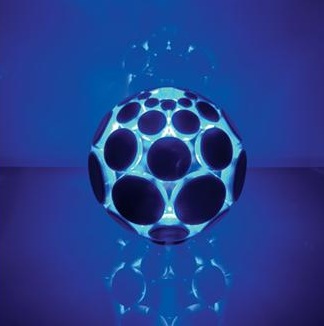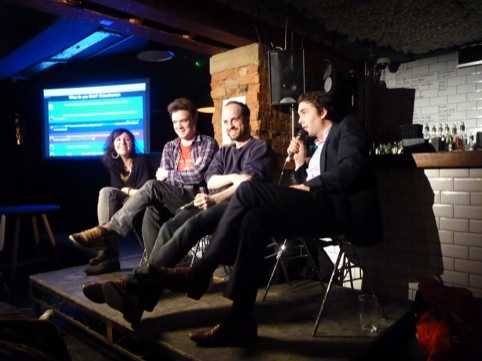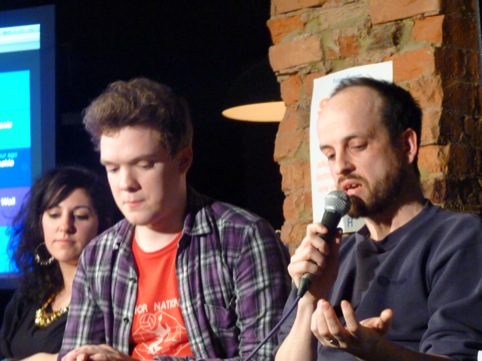Sonic Boom
Developments in technology and music innovation have always gone hand in hand, whether that’s stretching a skin to create a drum or Elisha Gray’s first synthesizer in 1876.
Last night, monthly London-based ideas event Future Human tackled the topic of how current technology is allowing musicians to develop sounds in ways never imagined by Gray, and is broadening the spectrum of sound to develop a near-infinite number of sonic possibilities.
After an insightful potted history of electronic music, sampling and software from Future Human’s Ben Beaumont-Thomas, Bristol-based design group Nu Desine showcased its on-going experiments in creating new electronic instrument the Alphasphere.
The Alphasphere is an orb created of concave 3D rubber pads, which can each be manipulated to make different sounds, speeding them up and lowering the frequency depending on how the pads are moved.

The instrument, which is due to launch some time next year, was designed as an antidote to a linear approach to music-making, where, because of the way electronic music is, made musicians live can look like they’re checking their emails rather than performing, says Nu Desine’s Adam Place. He says, ‘You’ll be able to make dub-step with your hands.’
The Nu Desine team were brave to showcase their innovative instrument so far before its completion and despite some major technical issues with getting the instrument tuned on the night, it’s clear that the Alphasphere has a lot of promise.
Future Human then invited musician Matthew Herbert, producer Subeena and Adam Harper, author of Infinite Music, to the stage for a debate entitled ‘How will technology shape the music of tomorrow?’.

Herbert creates pieces of music meticulously assembled from recorded samples of the environment. For track Nonsound, Herbert asked people from Palestine to send their favourite and most hated sounds to him, something only possible with modern recording equipment and email technology. Herbert then clipped and arranged these sounds, which included the sound of protestors being shot against a wall, and made them into the haunting track.
Keen to narrow the focus of his work from the ‘big’ themes tackled in his last record There’s Me and There’s You, Herbert is currently working on an album created by recording the sounds of one pig, right from its birth to people eating it.
But the project has not been smooth sailing. Peta banned Herbert from actually recording the pig’s death, claiming that it was wrong to capitalise on an animal’s death for ‘entertainment’, says Herbert. That music was classed by Peta merely as ‘entertainment’ says a lot about the way music is perceived compared to other art forms, argues Herbert.

Understandably, discussion of Herbert’s work brought up ideas about the ethics behind sounds and what is isn’t acceptable to record, something which Herbert is yet to reconcile himself. The panel also touched on the question of whether using presets and existing samples limits creativity and how easy access to the entire history of music and music-making software through the Internet is changing the music industry.
The next Future Human event tackles the topic of New Medievalism. For more information visit www.futurehuman.co.uk.





This was a really great event and I was glad to be part of it. If you would like to support the AlphaSphere project or get more info about it visit: http://x.nu/desine
This was a great event and we were lucky to attend. The pads on the AlphaSphere are actually not concave but simple membranes stretteched over a frame. Check out http://x.nu/desine for more info on our project.